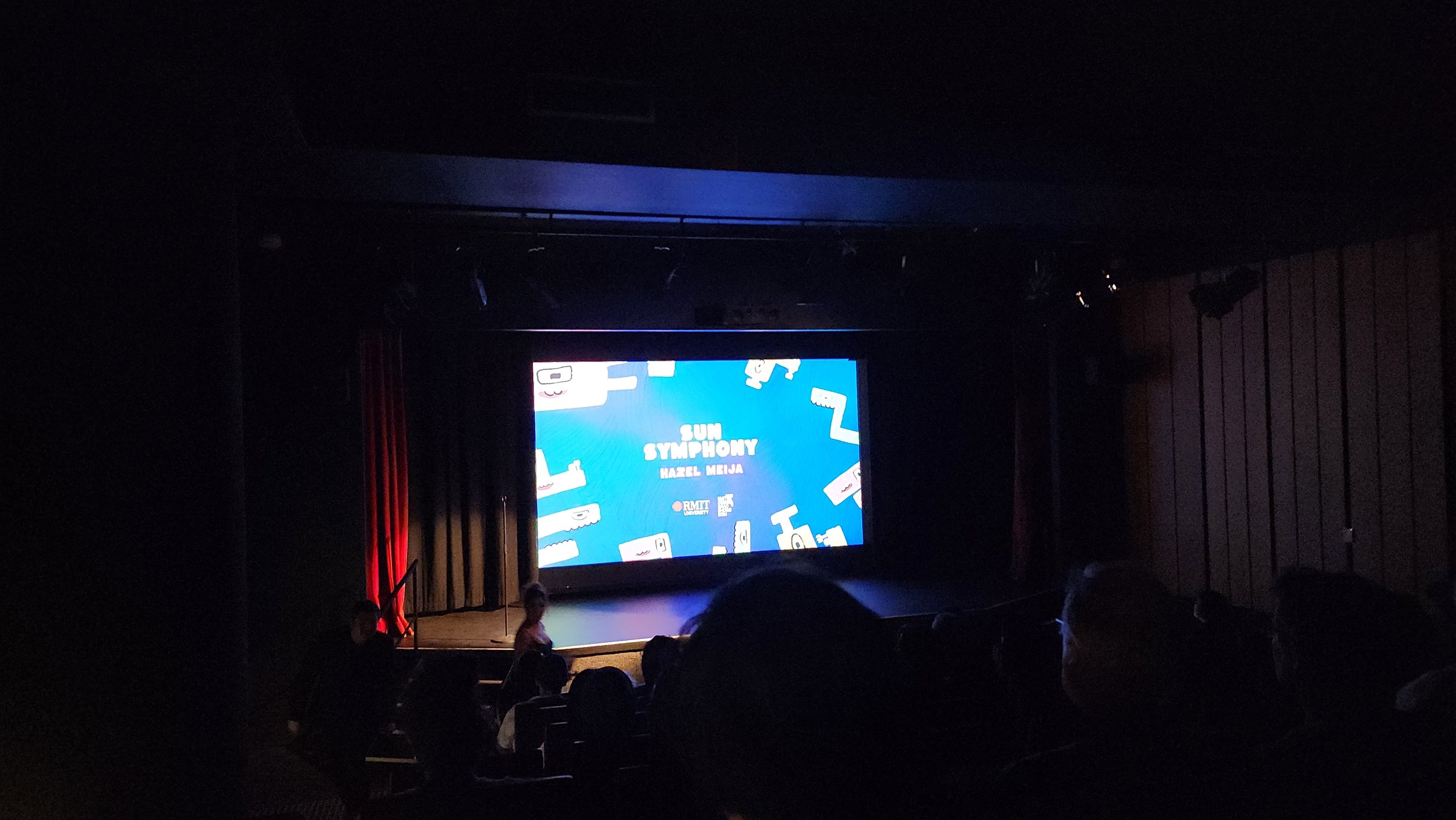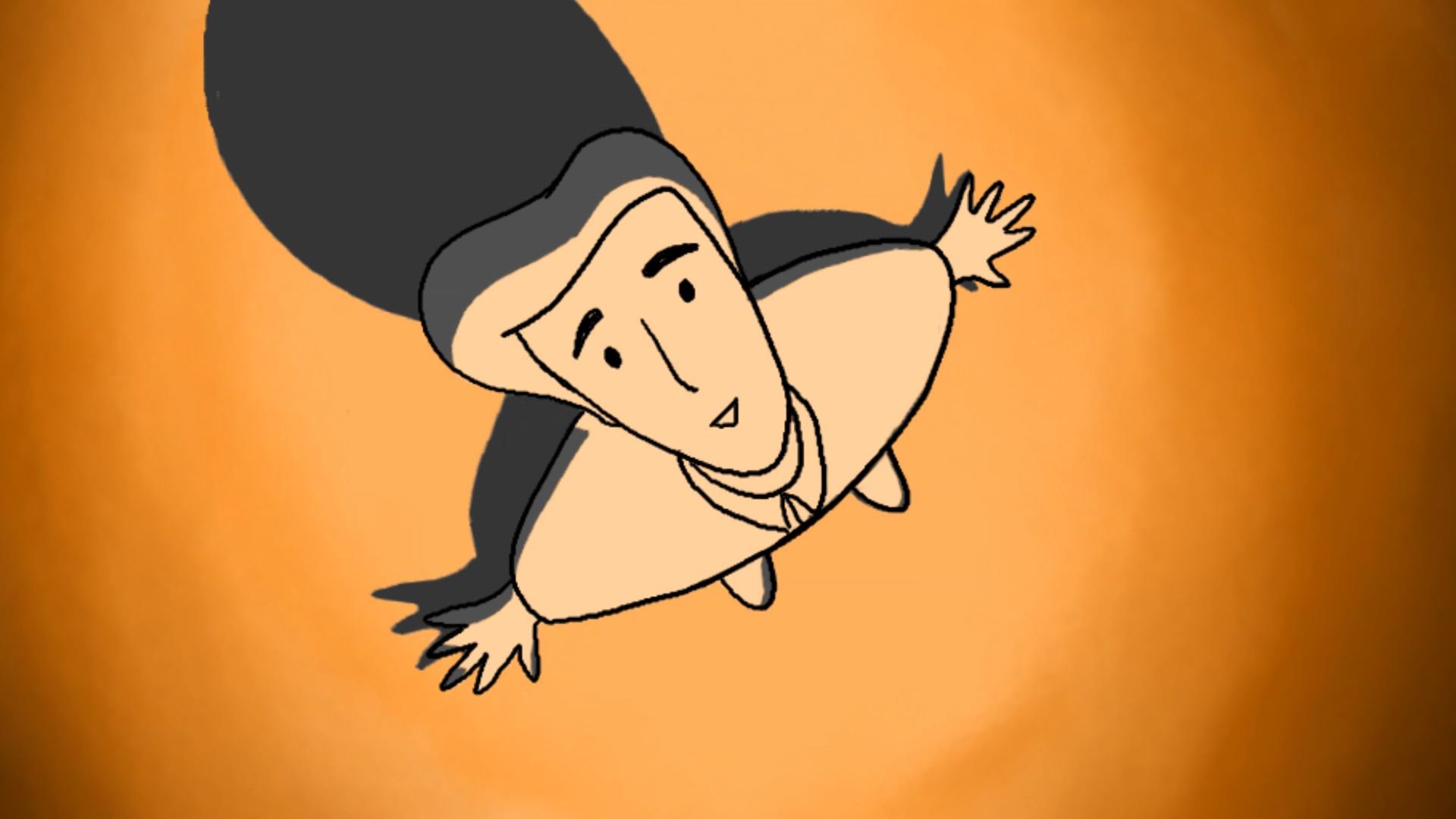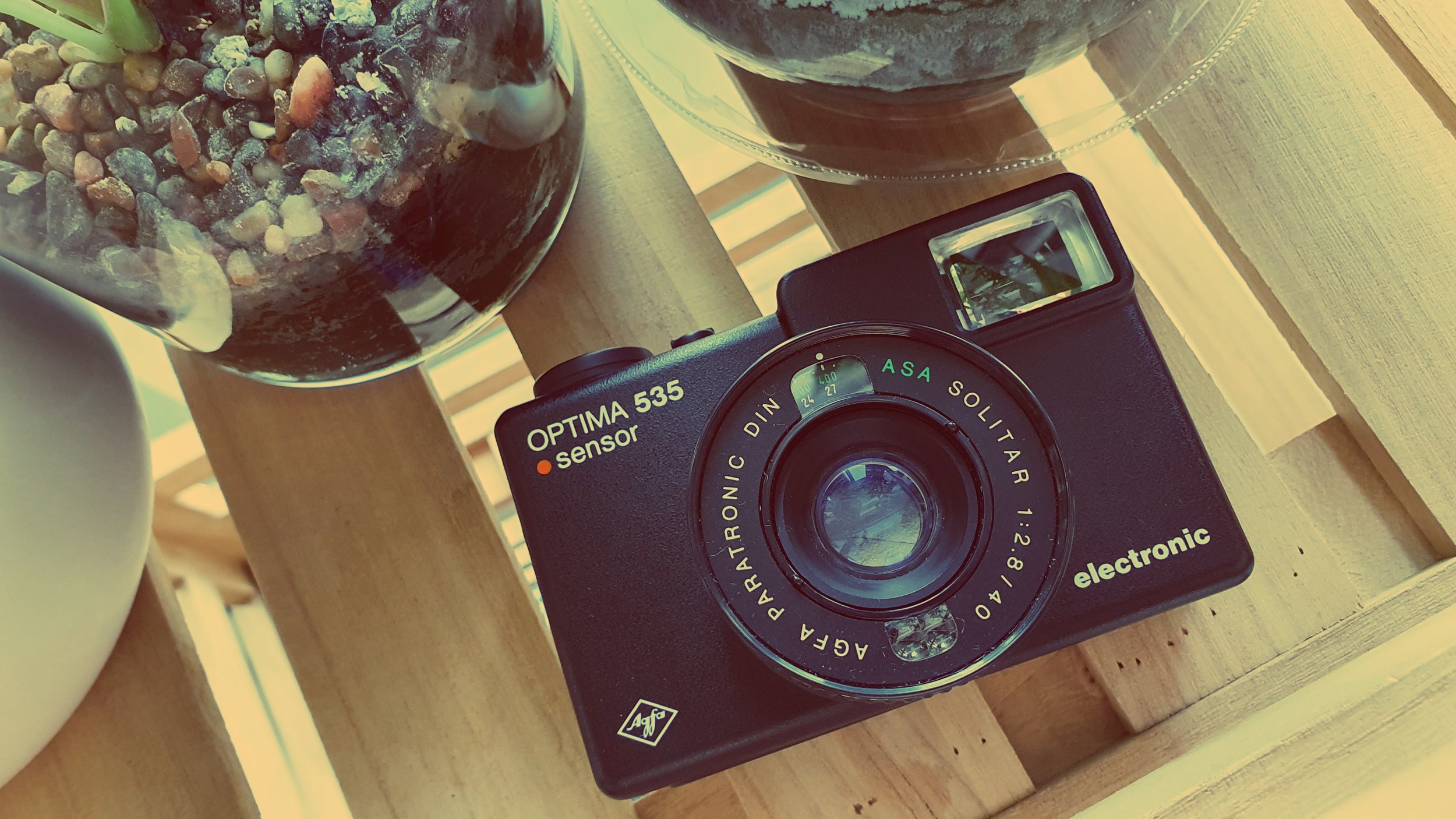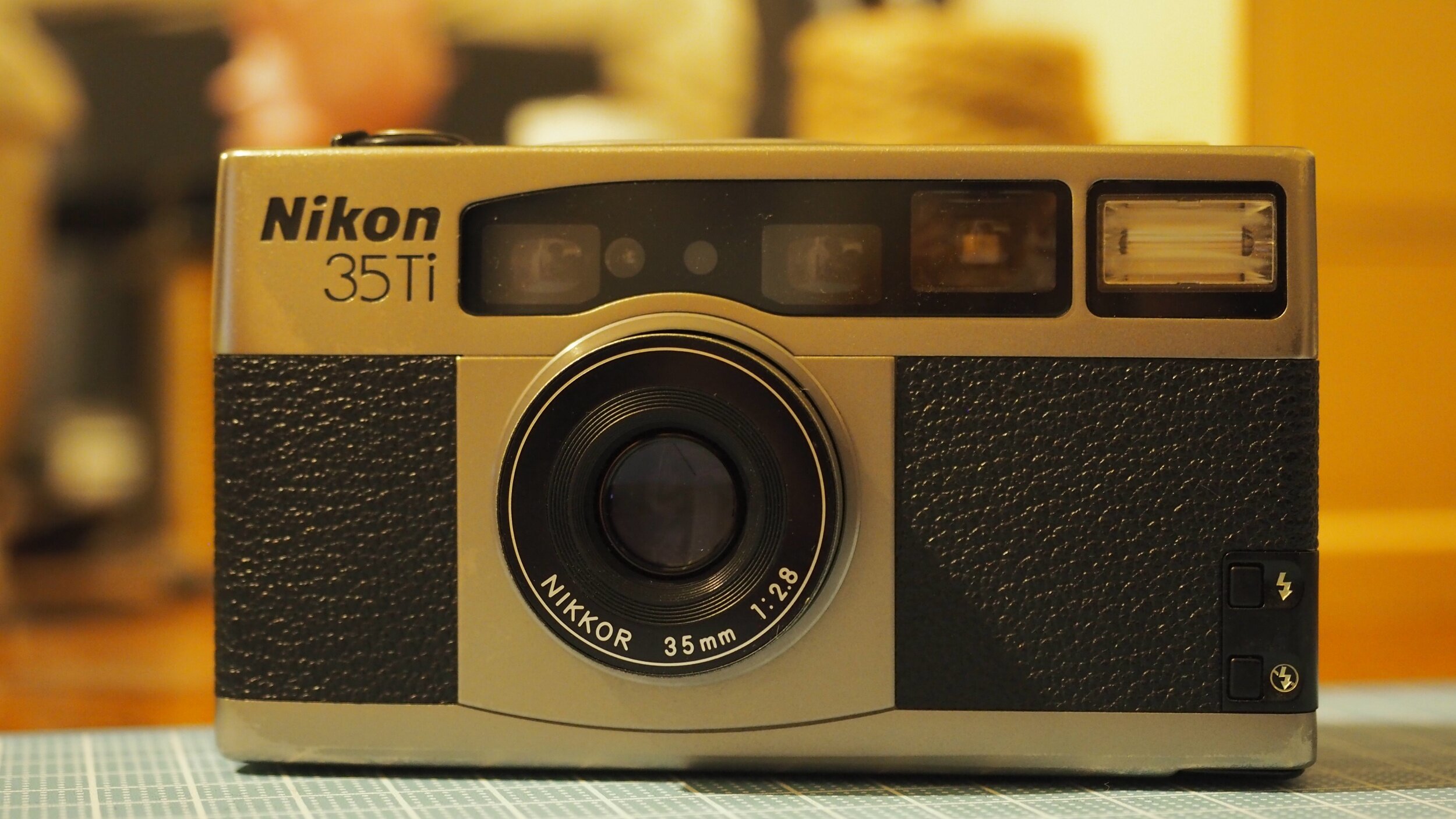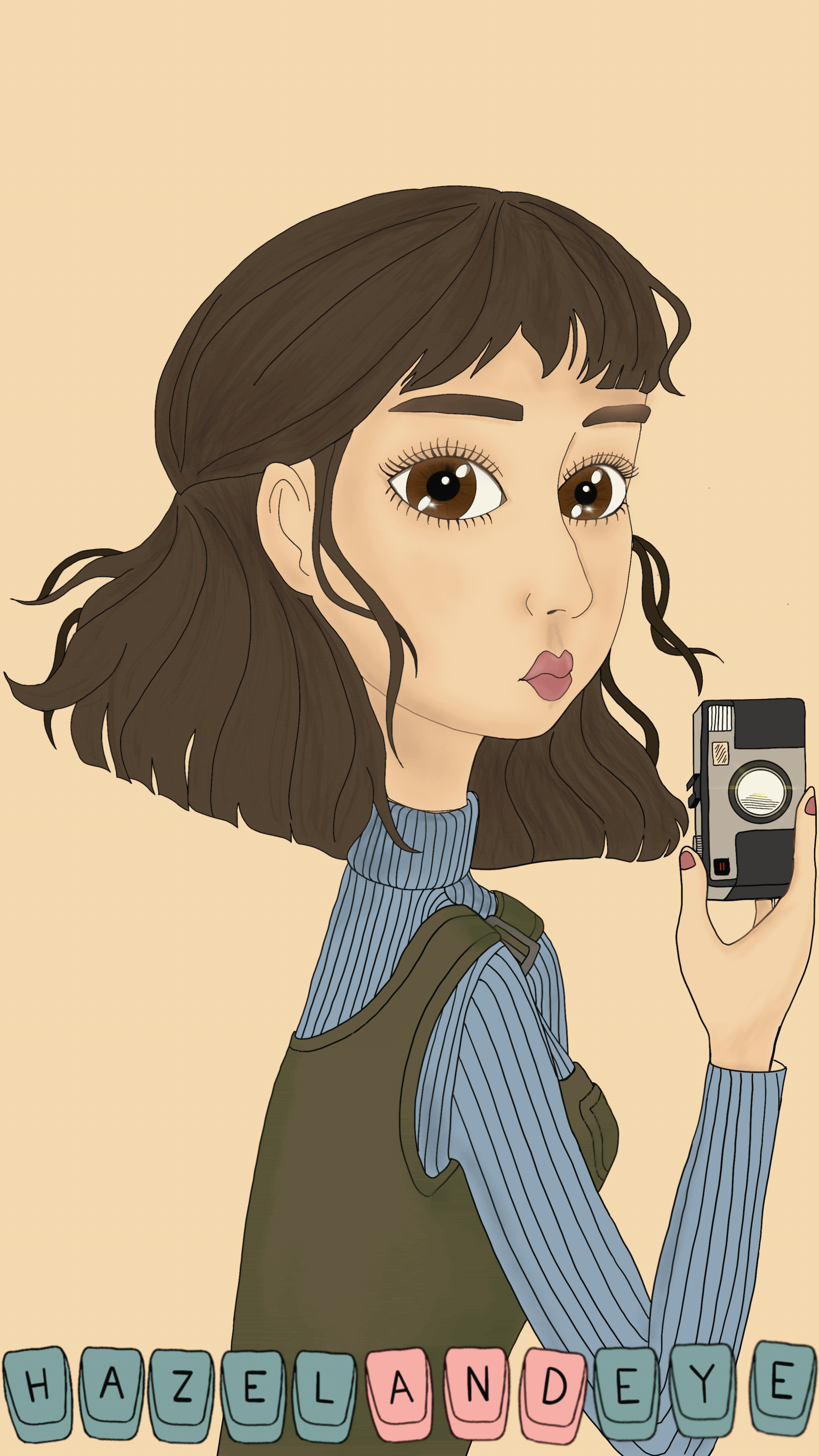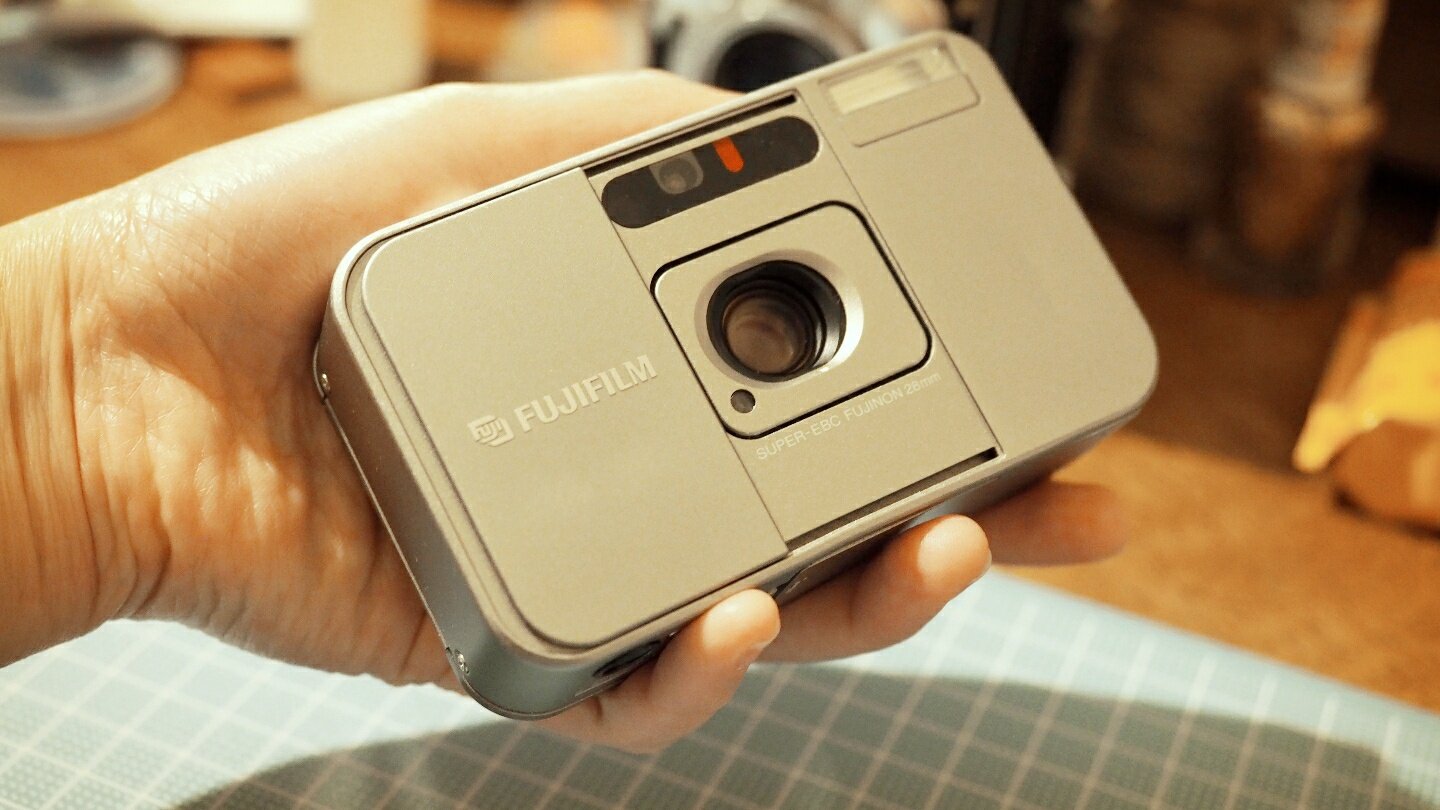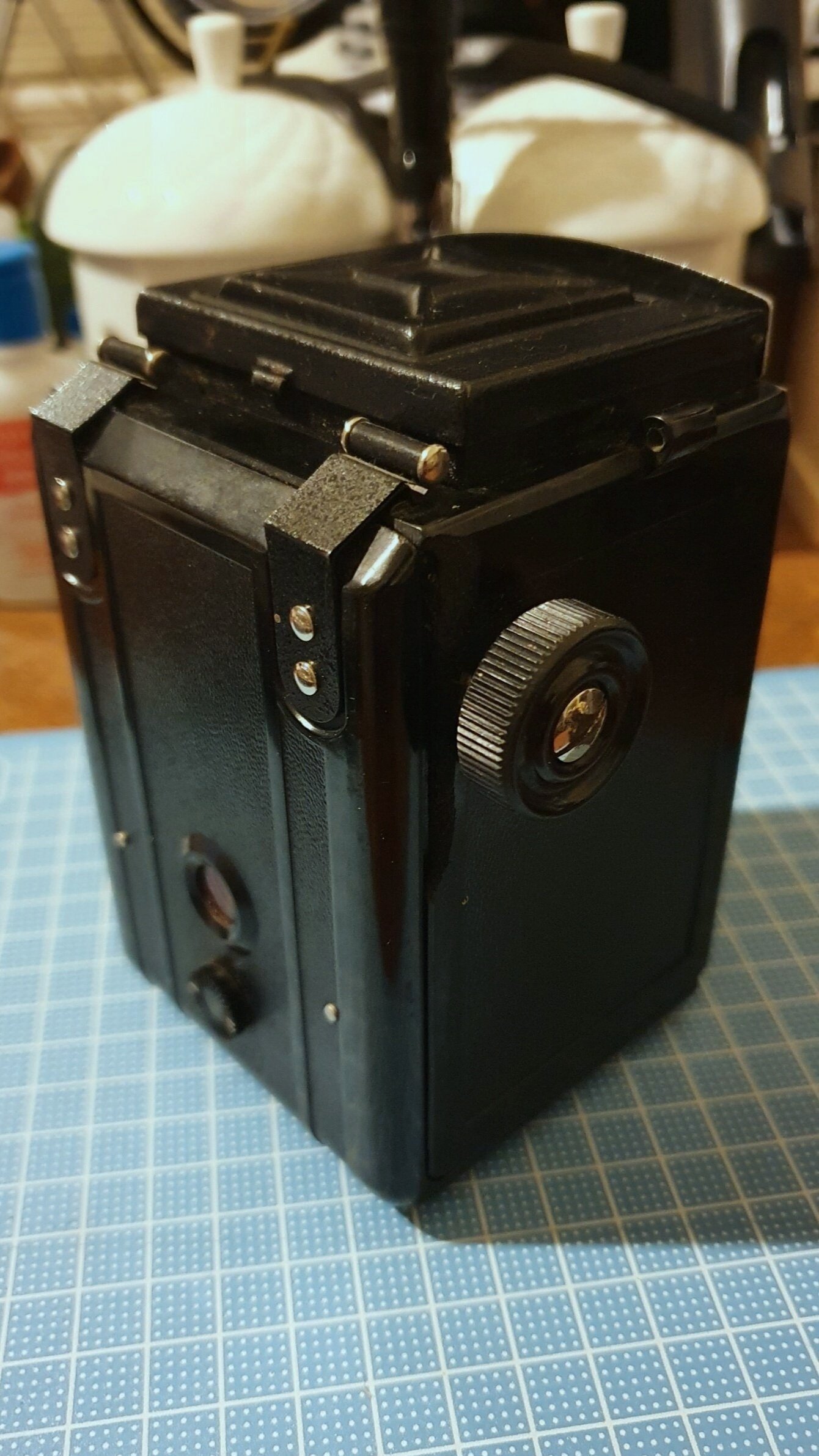Latest Posts
The Minimalist's Film Camera - Initial Thoughts on the Agfa Optima 535 Electronic Sensor
The Minimalist's Film Camera
Initial Thoughts on the Agfa Optima 535 Electronic Sensor.
Taking a temporary departure from the essay-like reviews I normally write for my initial thoughts and review on film cameras, I’m trying out a more minimalist approach that focuses on cleaner review comprising of a paragraph-long description, technical specifications, photos of the camera, and sample photos.
Thoughts:
If a minimalist was given a choice of film cameras, the Agfa Optima Electronic Sensor range would be high on their list. This is a beautifully designed film camera with clean lines, a heavenly large viewfinder, a near-perfect film advance lever, and that beautiful red shutter button. The few buttons and switches are all in the right places. This camera is an artform in itself. The camera operates with ease, the functionality is easy to get used to, and the performance, when done right, can result in some beautifully-framed shots.
Specifications:
Type: 35mm film viewfinder camera introduced in 1976 by Agfa and is part of the Agfa Optima Sensor series.
Lens: Solitar f2,8/40mm lens with 4 elements; single-coated.
Diaphragm: Automatic; f/2.8 to f/22.
Shutter: Paratronic with speeds 1/15-1/500.
Focus: Manual with pictograms and top and meter/feet scale on the bottom of the focus ring; focusing from 3ft/1.09m to infinity.
Viewfinder: Large finder with parallax marks for near focus.
Film loading style: Manual
Film advance: Manual single-strong lever with a ‘R’ button to rewind the film when pressed down and turned.
Film speeds: 25-500 ASA.
Flash: None but hot-shoe with flash selected in focus ring.
Cable release socket: Located on left side of the camera.
Tripod: Located on right side which is also used as a socket for a camera strap.
Case: Leather with camera strap socket hole.
Photos:
Test shots:
Film used: Kodak Ultramax 400
Lomo-view with the Lubitel 2 - A Simple Review of the ‘Amateur’ Medium Format TLR Camera
Lomo-view with the Lubitel 2
A Simple Review of the ‘Amateur’ Medium Format TLR Camera
Is this a toy? No. For starters, this is a fully mechanical and manual twin lens reflex camera. In fact, the word ‘lubitel’ translated to amateur. The name implies this camera can be wielded by anyone, even a kid! In all honesty, I was a little underwhelmed when I first held the Lubitel 2 but hear me out first. Here was a camera that’s made to look like a toy with its plastic build and simple mechanics and operation. The plastic body may not be to the standards that others might want to feel in the camera, that high-quality ruggedness and sturdiness. However, wielding this camera somehow makes me feel like I’m not afraid to get a bit extra adventurous with it. It’s incredibly light. The operation is extremely simple but effective. It’s also a pretty decent-looking camera! I’m used to the complex number of knobs, flicks and switches of other TLRs and SLRs cameras I have that it made me feel rather lost when holding the Lubitel 2. However, I was too curious to witness for myself the impressive performance that this camera so discreetly tried to hide. The time has come for me to dive in to this.
I purchased my Lubitel 2 for just AU $50 off a local seller on eBay. It arrived safely and was packed well (thank you, seller!). You’ll find plenty of these Lubitel cameras on online shopping sites along with more popular and more advanced Lubitel 166B. I’ve found the prices have varied but usually range upwards of AU$100. I was pretty lucky that I scored mine at half that amount. Otherwise, I would have probably not gone out of my way to buy this camera just because I already had two other TLRs - the Yashica 635 and the Rolleicord III. I’m glad I found this camera at such a cheap price because I wouldn’t have paid any more for it due to a few quirks that I wasn’t too keen about.
Upon further inspection, there was a fairly large piece of the side of the camera missing. However, this was hidden when the door was latched on. In my film roll test, this proved to be no issue and there were no light leaks. I was very lucky with that. The film door itself does feel quite flimsy but does lock into place firmly. Again, I shouldn’t be expecting too much out of this camera given it’s overall plastic-build. If there was one thing I really appreciated about this camera, it was how easy and light to carry it around. I was even happy to throw this in my bag but I would recommend keeping it in its intended case or away from sharp objects like your keys!
On the film door is a red-coloured little window that allows you to see the film number printed on the back of the roll. By forwarding the advance film knob, all you need to do is to stop when you see the number shows up in the window. Unlike other TLRs that I’ve used where the film advance knob will automatically stop when the next shot is ready, you’ll need to rely on your eyesight and good light to be able to see the number. While it may depend on the film roll brand you use, but I struggled so much with being able to see the number through that red-tinted window. As a result, I lost maybe around four shots due to this. A tip: make sure you are in direct light to see the number, otherwise you’ll most likely lose out on a few shots.
Opening up the viewfinder, I was welcomed with a ghastly sight of a scratched up magnifier and dirty glass that reflected a rather awful and mould-infested mirror. Given how old this camera and years of storage it might have had, I was unsurprised by the usual dirt and grime that comes with these older film cameras. However, mould had taken over the mirror. I could see it through the viewfinder. I had a bad feeling that the mirror was beyond hopes of repair. And I was right.
Firstly, I dismantled the top of the viewfinder, which was fairly straightforward by unscrewing three screws semi-hidden on the sides and on the bottom. After unscrewing them, I was able to remove the top part of the viewfinder to gain access to the glass and the mirror. I was hoping that a little and gentle clean with isopropyl alcohol will remove the mould or whatever it was it looked like on the mirror. Sadly, this proved to be the wrong move. The reflective covering rubbed off in my attempts to gently wipe it off. The mirror quality on these cameras were pretty sub-par and not like those you find on other SLR cameras. As a result, I ended up having to toss away the mould-decorated mirror and bought a pack of new ones at the craft store. I can’t say if the original mirror had any particularly special about it, but at this stage I couldn’t tell. Swapping out the mirror with a new square-shaped one from the craft store did work. Now, I can clearly see through the viewfinder. If your Lubitel 2 camera comes with a dirty mirror that’s beyond repair, this is a fairly easy fix. Other than the mirror, there was just a lot of grime and dust internally. I washed the thick glass part with lukewarm water and gentle dishwashing liquid and wiped away the dust and grime with the help of a Q-tip and microfibre cloth. I think I had to do this several times before I felt comfortable with the fact that this camera was in an acceptable condition. Other than the mouldy mirror, the scratched magnifier, the internal dirt and grime, the annoying red tinted window making the film forwarding process difficult unless you are under direct light, I pushed forward with making this camera good enough to use again.
The same thing could be said with the case. Either this camera has seen its fair bit of use, which is great, or the years haven’t faired so well on the material. The case can still be used and, surprisingly, there is no mouldy smell! However, you’ll probably not see me swinging this case around so candidly. I’m afraid the strap might break!
After a clean and overhaul, the camera is now workable! Not that it wasn’t to begin with but the state and condition it was in would have made the experience rather unenjoyable. See that clean and shiny glass?
The question now: how does the camera perform and did the film roll test go? I decided to use a roll of Kodak T-Max 400 but didn’t realise that B&W development normally takes longer and is more expensive than regular C-41 developing. Well, now I know! One thing I found common in all of the reviews I read about this camera was how decent and sharp the lens performed. I had lost a fair few shots due to the issue I had with the red window viewer. In the ones that were successful and despite one of them being underexposed, the photos turned out sharper and clearer than I thought! For a camera that’s made to feel like a toy and operation so simple and basic, I was truly surprised. It is sharp for what we get at face-value. It was easy to compose my shots. While it was a bit hard to clearly see what was in focus due to the scratched magnifier and the spot-focus on the glass, it was easy to compose my shots especially for scenes that were set at infinity. One thing I did find was how easy it was to accidentally hit the shutter when cocked. The shutter is a small little switch that’s incredibly sensitive. I think this was another reason why I had lost a few shots. Other than that, I found the overall lightness made my composition strangely easier and quicker to do than my heavy ones. I used to think using heavier cameras helped with stability, but it was different with the Lubitel 2. Perhaps it was because of the lack of knobs and levers to change this and that setting that made it just that easier to use. Like using a point-and-shoot camera, I felt liberated with using this camera because I felt like I could spend more time composing scenes without having to worry about changing so many other settings. To summarise:
Pros:
- Incredibly easy and light to use and carry around.
- Although the body is plastic-build, it is sturdy.
- The limited amount of settings makes it easy to operate (this may be a good or bad thing for some)
- The lens quality is sharp and you will get pretty nice shots when shooting under good and bright-lit settings.
- These cameras can still be bought for a cheap price. Be warned, you pay what you get.
- This is an inexpensive and fun way to get into medium format TLR cameras as a casual hobby! The films and developing costs will be what costs more in the long run.
Cons:
- The quality of the camera is not that great and is probably a reason why you can get this camera for cheap.
- If you’re after a fully manual experience with various settings like mirror lock-up, multiple exposures, you’re best looking at other TLRs from Yashica, Mamiya, Rolleicord, etc.
The amount of time I spent on the overhaul and cleaning was because of the years of use and eventual storage. Other than that, I cannot fault this on the camera’s quality itself. While I my initial impressions were really less than impressive, I’m thoroughly surprised and happy with the Lubitel 2 overall. For any one that wants a simple-to-use TLR, this is a good option to go for. This may not necessarily be a first choice for those wanting to try medium format because I assume those who want to try this format are already experienced with 35mm and are wanting a bigger format to shoot with. When used in favourable lighting and when wanting to use a casual medium format TLR with little bells and whistles needed, I don’t think you can go wrong with this fun little camera.
I am Titanium! - Initial Thoughts on the World's Most Advanced Point-and-Shoot Camera, the Nikon 35Ti
I am Titanium!
Initial Thoughts on the World’s Most Advanced Point-and-Shoot Camera, the Nikon 35Ti
While I’ve been busy in the typosphere and socialising with fellow typospherians in the virtual world of the internet, I’ve recently come upon an opportune chance to purchase a Nikon F2 - and I managed to negotiate a good price for it. After looking at my previous entry posts, I realised I didn’t post anything about one of my Nikon cameras, the titanium-clad Nikon 35Ti. Hence, the opportune moment arises for me to actually review the photos that I had taken quite some time ago and had full intent to post… but eventually forgot to do. Let’s start with a few photos to get the ions working.
Now you’ve got to take a minute to admire the sheer craft and technical sophistication that is unsurprisingly of Nikon. First off, a round of applause is well-deserved. The Nikon 35Ti has mostly been sparred against the Contaxt T2/T3 as both have just the same number of advanced options available on a point-and-shoot camera. Now, I don’t have enough money to purchase a Contax T2 or T3 so I cannot allude to their performance. But I don’t doubt all the wonderful things I’ve heard about the Contax T series in general. I do own a Contax G1 rangefinder camera and it was my main go-to for a couple of years before I started to explore other cameras. Let’s go back to the Nikon 35Ti. While some people may not be the biggest fan of its boxy look, it is still a beautiful gem to behold. From the looks alone, you can tell the premium build that this camera has been given. It is solid and reassuring to hold. The leatherette covering makes it feel steady and safe to hold for those with sweaty palms. No more broken film cameras from a lack of a strong grip! I have only just run a couple of rolls on this camera, but I think I have enough experience with the Nikon 35Ti to give my initial thoughts on – the goods and the bads.
Without going too technical here, there’s a quite few neat and especially impressive features that makes this camera such a overachiever for all the good reasons. While not a fully fleshed-out one, this camera has Nikon’s 3D matrix metering system. What this means is that it measures exposure instead of light. The Nikon 35Ti also has one of the most insanely sharp lenses on a compact point-and-shoot camera. I don’t recall any of my photos being out-of-focus. In fact, the autofocus was spot-on every single time. The camera didn’t struggle with it. I believe you can shoot manual focus, but I don’t even think why I’d bother with manual focus when the autofocus works so well - too well! One of the most unique features that this camera has – and I think one of its strongest selling points but the usability of it is still questionable – is the beautiful analog display system at the top of the camera. It’s like looking at an Omega Seamaster dial that’s been slapped onto a Nikon camera. While some may think it’s not as practical because of the fact that you’d have to take yourself away from the viewfinder just to look at what the settings are, but I do like it for its functionality as an advanced compact camera. I think it would be handy for night photography and I’ve some beautiful shots taken with this camera. The analog display system shows you everything you need to know in a very clear and concise manner and I like it a lot.
My only gripe with this camera is the tiny button for a flash that I have to press and hold down every time I want to stop the flash from firing. There are instructions on how to disable the flash by inputting some sort of binary code but I don’t know if this resets every time I turn the camera off and on again. I have pretty small fingers but I find it quite cumbersome to have to hold down that iddy bitty button every single time. I normally don’t use flash in a lot of my photography so I’m not too pleased about this. Had they made a bigger button or made it a toggle on/off situation, it will tick the boxes of a lot more people. Another little thing which doesn’t really bother me but may bother others who like their quieter cameras is how the lens noisily extends and retracts via electric motors. It’s a tad bit clunky for such a small thing.
The Nikon 35Ti matrix metering system, crazily sharp lens, titanium build, and unique analog display system makes it one of the finest choices for an advanced/premium/top-quality/top-of-the-line/insanely-priced-but-for-good reason point-and-shoot camera. It’s an expensive camera and you will definitely be able to get cheaper alternatives that may not necessarily have all the whistles and bells like this one does but will still give you some damn good performances. It is sort of like a middle-man between a very basic point-and-shoot and a manual SLR camera. Whether you need that in-between option is entirely up you. It’s a fantastic camera and heads will be turning because of that beautiful analog display.
7 Frames - The Grand Budapest Hotel
7 Frames
The Grand Budapest Hotel
Why not eight? Why not six? Elizabeth Hurley throws the question back to Brendan Fraser’s character when he asks her why he only get seven wishes in the comedy Bedazzled. Why seven frames? In one of my previous posts, I had the extravagant idea of wanting to write a review as well as capture my favourite screenshots from all of Wes Anderson's movies. Why Wes Anderson, you ask? Coupled with genius cinematographer Robert David Yeoman, this duo creates some of the visually pleasing, perspective-tickling and angle-galore camera work and, yeah, cinematography. This is the kind of visual aesthetic I've aimed to capture in my own film photography. I’m so happy that I have an inspiring collection of works by these two geniuses to dive into and watch how they do it so well. Going back to my ambitious plan, I have to admit the writing part takes the longest. In another way, it doesn’t seem to align with what my website is all about and that's really showcasing my portfolio, achievements and visual aesthetics that inspire my work. Instead, my plan is to select seven of my favourite scenes from each Wes Anderson movie chosen in no particular order. More so chosen on which one is my favourite and working my way down the list. With those seven frames, I will aim to replicate those scenes in my own photography using things I see around me and nearby places. It will be an achievable and fun challenge where I can hopefully see myself improve. I will aim to set realistic but spaced deadlines for when they are started and finished. For the time being, let’s get started with The Grand Budapest Hotel.
The Grand Budapest Hotel is a visual treat for sweet-lovers. It is also a comedic tragedy that uses an alternate past, an establishment, and a few loveable characters to explore deeply emotion ideas in humanity. Any fan of Wes Anderson’s work will find all the distinct direction, style, cinematography and character development present in this film. However, The Grand Budapest Hotel takes it up a notch. It creates a fictional past that’s not so different from our historical past that makes it incredibly relatable and poignant. The main hero, M. Gustave H., is an incredibly admirable character that stays true to his principles from start to finish. I wonder if I will ever meet someone like M. Gustave H. in my lifetime.
The movie primarily takes place in, you named it, The Grand Budapest Hotel, a highly reputable institution filled with cultured guests of a certain privileged class who frequent the establishment. The story is told in a framed perspective by Zero who, in his late years, confides his story and the wonderful story that takes place at The Grand Budapest Hotel. When Zero takes up the new lobby role at the hotel, he is taken under tutelage of Monsieur Gustave H. who oversees the operations of hotels. They try and solve the murder mystery of one of the guests of the hotel, which leads to train rides, escaping from prison, a sled chase through snowy alps, and the theft of a rather expensive painting. It is the story of a story of a story, and it’s beautifully executed an almost nostalgic way as if you’ve known those characters in some way.
Note, I did write up almost half the review before realising I could go on and on for hours and write a critical analysis the selected film. I will make the choise of writing a succinct paragraph-long review of them or not at all. Let’s not be harsh on ourselves and roll on o the next paragraph.
The story is told by an older Zero, played by F. Murray Abraham, who oversees the narration of the story in an enchantingly bittersweet manner. The story is told to a young writer, aptly named the Author, and is played by Jude Law and later played by Tom Wilkinson. A much younger Zero by Tony Revolori, who start employment at The Grand Budapest Hotel as a lobby boy, is taken under the wing of Monsieur Gustave H. and becomes his confidante and accompanies him on all the adventures. Ralph Fiennes brings an effortless charm in his fantastic portrayal of Monsieur Gustave H., the renowned concierge of the Grand Budapest Hotel, meticulous in his work and anticipates the needs of guests before guests are even aware of it. Upon the mysterious death of the one of the hotel’s frequented guests, Madam D., son, Dimitri, played by Adrien Brody, a recurring cast member in several of Wes Anderson’s films, does whatever it takes to make sure that Monsieur Gustave H. has no part in the will with the assistance of Willem Defoe’s character Jopling, Dimitri’s hired assassin. Gustave and Zero’s adventures include the help of Zero’s love interest who is an apprentice at Mendl’s named Agatha, played by Saoirse Ronan, and has a distinct scar on her left cheek. Edward Norton, another regular name in Wes Anderson’s films, plays the police investigator of Madame D.’s murder as well as well as French actor Matthieu Amalric who plays the shifty butler of Madame. D. Other enjoyable cameos to see include Bill Murray, Jason Schwartzman, Owen Wilson, and Léa Seydoux. The Grand Budapest Hotel is another star-studded group of talented actors, some of whom have recurring roles in Anderson’s other great films. While refreshing to see new faces and names on the silver screen, it’s also just as pleasing to see when a director continues to work with the same group of actors because something just seems to work and that translates and is evident in the end-product.
Watching the film is like opening a present only to find another present waiting inside, and when you unwrap that present you find yet another present. The story’s telling is unravelled in a similar manner and its execution is top-notch from a director’s already-great story-telling technique.
All screenshots are from the film The Grand Budapest Hotel, directed by Wes Anderson, Foxlight Search Picture, 2014.
August with Film - Five Frames with Wes Anderson
AUGUST WITH FILM
Five Frames with Wes Anderson
“You know how I think better in the shower, get all those positive ions flowing.” Owen Wilson’s character Gil says this to his fiancé, Inez, played by Rachel McAdams in Midnight in Paris. I wholeheartedly agree with this statement. It’s true. God knows how many ground-breaking, life-changing decisions have been thought of or revolutionary ideas that have sparked whilst being dowsed by hot water. For I had just this happen to me.
Recently, I’ve been on a roll with film photography. It’s probably one thing I do almost every single day: read and research about film cameras that have become cult classics, why they’ve amassed a fandom of dedicated film enthusiasts nostalgic for the grain and not the pixel, and if I want to be a part of than fandom and relive it for myself. Within the last ten years I’d say, there’s been a strong resurgence in film photography and enthusiasts alike. I’m one of them.
I grew up having my photos taken by my parents, mostly by my Mum and the Minolta 5000 Maxxum. To this day, I see these photos and I still see the richness of the colours, the clarity of photo, the careful alignment of subjects against backdrop. The meticulous process of taking a photograph has become non-existent. This is the process I have fun with the most. Like most of those getting into film photography, we can all agree that film photography allows us to breath with the process, to live in the moment, to observe, analyse, and snap the moment. It makes us expert observers. Film is limited to 24 or 36 shots and it shouldn’t be wasted on multiple shots of the same subject, but instead the one almost-perfect one.
A director that evokes nostalgia in such visually eye-pleasing colours and perspective with the recognisable lateral panning cinematography work of Robert Yeoman is the genius that is Wes Anderson. My photography work leans heavily on colour, lines and perspective. I tend to shoot subjects like buildings and structures that won’t object to my photo-taking. I still find it hard to take photos of people, another thing I can develop and get more confidence (but for another time). It will be a great experience to work on a project where I choose a select number - at this stage, it’s five - of favourite frames or scenes from key Wes Anderson movies, discuss them in further, and then aim to take photographs similar to or inspired by each frame. It’s sort of recreating Wes Anderson but using what I have within access and within reach. Melbourne’s got the goods so why not?
I haven’t really thought about what the timeframe will look like but it will essentially look like a weekly post of the review. What will make it rather challenging will be to get the time and opportunity to shoot photos and develop them. Until lockdown has been lifted and shops are back in business, there will very limited chances to get out. However, it will be a good chance to take photos while there’s barely anyone to have to deal with. As long as the review is completed and the photos taken, I can probably jump on to the next movie. Like jumping from moving train to another, it will a rocky ride with unpredictable results and that’s something I’m excited about.
To end with a quote I really liked because it summed up just how likeable and gracious this character to have graced the silver screen in a long time is Mr. Moustafa’s beautiful statement regarding M. Gustave H.: “There are still faint glimmers of civilisation left in this barbaric slaughterhouse that was once known as humanity... He was one of them. What more is there to say?”

